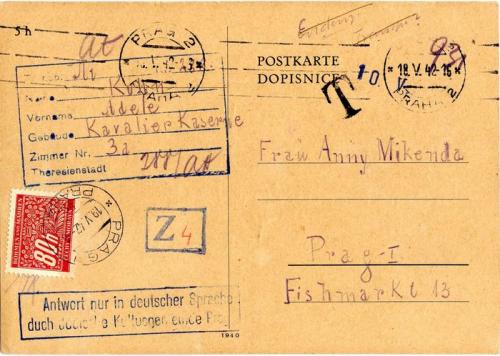Three New EHRI Document Blogs: Wartime Diary, Correspondence across Ghetto Walls, and Sharing Data with EHRI

Three new EHRI Document Blogs
A Wartime Diary of Two Dutch Jews in Hiding
The latest contribution to the EHRI Document Blog is written by Katja Grosse-Sommer who graduated from the University of Amsterdam with a master’s thesis focused on unpublished diaries of Jews in hiding in the Netherlands during WWII. Her blog post looks at the wartime diary of Fientje Weyel-Aleng and Jaap Weyel, a young couple from Amsterdam forced into hiding in September 1942 who chronicled the 933 days in hiding spanning around 870 pages. Post-war, they donated the diary to the NIOD in Amsterdam, where it has been digitalized and recently made available online.
Looking at the diary, the post focuses on one of the many unique hiding experiences of Dutch Jews during World War II, the post-Holocaust use of wartime documents such as diaries, and the collection practices as well as contemporary digitalization projects of research institutes such as NIOD.
Read A Wartime Diary of Two Dutch Jews in Hiding on the EHRI Document Blog.
Correspondence Across Ghetto Walls
This contribution to the EHRI Document Blog by Magdalena Sedlická looks at both official correspondence from the Terezín Ghetto and illegal letters smuggled out to bypass the strict censors from the “Jewish self-administration” and the SS as well as the various ways that such letters were smuggled out. These two types of correspondence reveal two different faces of the ghetto: The official one, which was supposed to support the illusion of Terezín as a place where the Jews could live peacefully; and the secondly, Terezín as a major site of suffering and death for the Jews from the Protectorate Bohemia and Moravia and other European countries.
Read Correspondence Across Ghetto Walls on the EHRI Document Blog.
The Learning Curve in Sharing Data with the EHRI Project: The Example of a Memorial Site, Kazerne Dossin, Mechelen
Using the example of a photograph of Holocaust victim Rosine Régine Lewkowicz, this blog post shows how Kazerne Dossin worked together with EHRI to produce standardised archival collection descriptions. The post focuses on the evolution Kazerne Dossin went through during this work, and on the implementation of tools EHRI provided to optimise this workflow, a process from which Kazerne Dossin benefited as a test case.
Read The Learning Curve in Sharing Data with the EHRI Project on the EHRI Document Blog.